Pest Information
Insect Information & Control
Stored Product Pest Information & Control
Fly Information & Control
Rodent Information & Control
Wildlife Information & Control
Bird Information & Control
Insect Information & Control
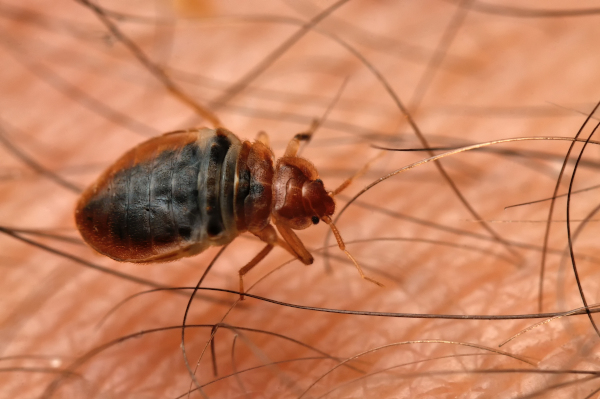
Bedbugs
Once almost completed eradicated from North America, bedbugs have made a resurgence in recent years. Adult bedbugs are reddish-brown, oval, flattened, and wingless and about the size of an apple seed.(approximately 4 to 5 mm) Bedbugs can live for a year or as much as eighteen months without feeding, but they typically seek blood every five to ten days. Low infestations are very difficult to detect, and it is not unusual for the victim to not realize they have bedbugs in the early stages. Female bedbugs can lay up to five eggs in a day and 500 during a lifetime and must only be impregnated once. Good housekeeping in association with proper preparation and removal by vacuuming will certainly assist in control. Thorough inspection & treatment procedures involving steam treatment of household contents and chemical application are often required to eradicate bedbugs.
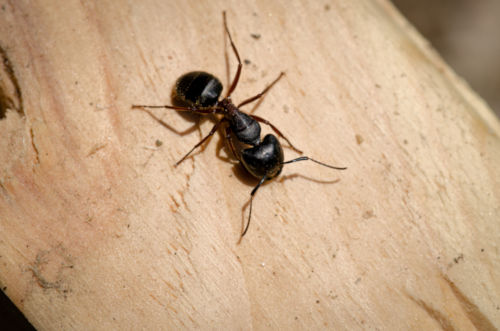
Carpenter Ants
Carpenter ants are large black ants (1/4 to 1″) in size. Carpenter ants do not eat wood but tunnel into it as they build nesting sites. Carpenter ants are often attracted to areas within structures where water leaks have occurred and can cause considerable damage to wooden framework if left untreated. Multiple treatment procedures should be employed including a thorough inspection, treatment of galleries and wall voids where activity is present and elimination of foraging trails. Resolving moisture issues, eliminating yard debris, and cutting back tree branches adjacent to the structure are also important measures that should be considered.
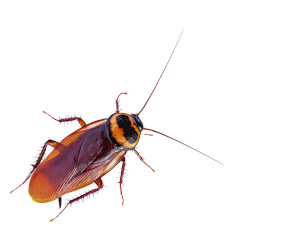
Cockroaches
Though there are many species of cockroaches, the german cockroach is extremely successful at establishing itself within structures. Measuring about 1.3 cm to 1.6 cm (1/2″ to 5/8″) long it can be tan through brown to almost black, and has two dark parallel streaks running from the head to the base of the wings. The German cockroach is one of the most common and prominent household cockroaches in the world. These insects are particularly fond of inhabiting restaurants, hotels, and nursing homes. This cockroach is also smaller than other species and tend to gather very small cracks and crevices to evade humans.They can most effectively be controlled with bait in cracks and crevices near harborages and with dust applications into pipes shafts and wall voids.The immature cockroaches will live off excretions and moults from the adult cockroaches and thus can remain hidden away from most surface treatments

Earwigs
Quite common globally there are over 1800 recorded species of earwigs. Most earwigs are elongated, flattened and measure (10-14mm). Earwigs are also drawn to damp conditions. During summer months, they can be found around sinks and in bathrooms. or anywhere that they can remain concealed in daylight hours. Picnic tables, compost and waste bins, patios, lawn furniture, window frames can potentially harbor these unwanted residents. They prefer cool, moist places, and a rolled up damp newspaper placed where earwig activity is suspected can be effective in collecting them. Residual applications around the home (bathroom, baseboards, window frames) can be a long-term repellent along with treatment of the exterior as they tend to lay their eggs and congregate under wood and stone structures.

Fleas
Fleas are about 1/8 of an inch in length and are black to reddish brown in colour. After each blood meal females lay 4 to 8 eggs on the host animal or its bedding and about 400 to 800 eggs within her lifetime. Eggs hatch in about 10 days and larvae feed on the adult fleas feces. Adult fleas feed on blood and seek a blood meal within 2 days of becoming an adult they generally remain on the host and within bedding. Control involves treatment of the animal by veterinarian or the owner with flea control product, thorough vacuuming of affected areas, followed by residual application containing insect growth regulator which blocks the development of flea larvae.

Silverfish
The silverfish is a small and wingless typically measuring (12–25mm ) and is silvery blue in colour. Silverfish will commonly graze in and around showers, baths, and sinks on the cellulose present in many shampoos, shaving foams and so on.Other substances that may be eaten include cotten, linen, silk and synthetic fibers, Silverfish can be found anywhere in homes including, but not limited to, garages, closets, underneath beds, couches, electrical appliances such as keyboards and generally preferring dark areas. Treatments should involve reduction of available food sources and a crack and crevice treatment of areas they seek harborage.
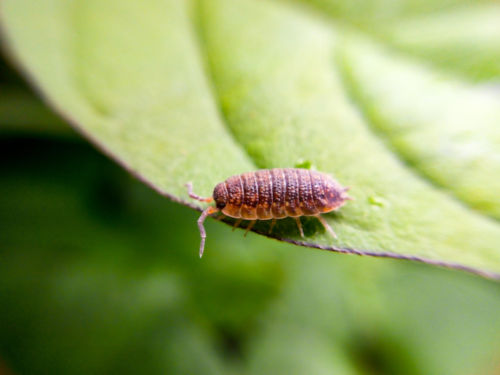
Sowbugs
Sowbugs are part of the woodlice family. Woodlice require a great deal of moisture and are usually found in damp, dark places, such as under rocks and logs. Their presence generally indicates a dampness or moisture problem and are often found in unfinished basements. Treatment generally involves the elimination or reduction of water sources and a residual crack and crevice application into areas where sowbugs hide.
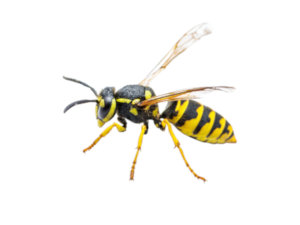
Wasps
Sowbugs are part of the woodlice family. Woodlice require a great deal of moisture and are usually found in damp, dark places, such as under rocks and logs. Their presence generally indicates a dampness or moisture problem and are often found in unfinished basements. Treatment generally involves the elimination or reduction of water sources and a residual crack and crevice application into areas where sowbugs hide.
Stored Product Pest Information & Control
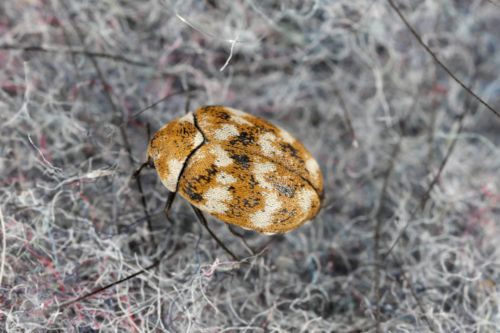
Carpet Beetle
There are approximately 500 to 700 species of carpet beetles worldwide. They can range in size from 1-12 mm. Key characteristics for adults are round oval shaped bodies covered in scales. The carpet beetle larvae start to feed as soon as they hatch. Carpet beetles are normally associated with things such as carpets, wool, furs, and any processed animal or plant food. Regular cleaning of spilled food or lint will eliminate any sites for potential breeding. Susceptible items like food, wool items, and furs should be stored in an insect proof container. If an infestation is suspected then the source of the problem must be removed and destroyed to further limit any possibility of spreading. Locating the source of infestation is often the major challenge and residual chemical applications are often required.
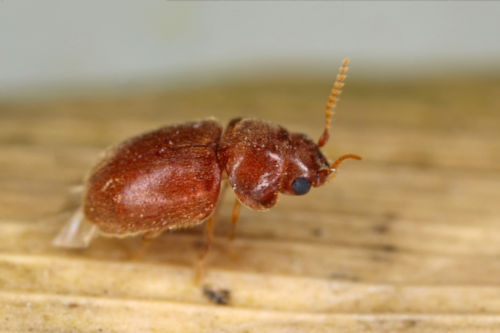
Cigarette Beetle
Cigarette beetles are light brown in colour and approximately 1/8th of an inch in length. They are major pests of stored tobacco but also feed on spices, books, dried fruits, nuts, and vegetables. Most common items infested in homes are dried dog food and paprika and they can easily penetrate packaged materials. They are strong fliers and can enter through open windows and doors but are often brought in within products in their larval stages. Control involves locating the source of infestation and subsequent removal of the product along with sanitation procedures. Residual application of cracks and crevices and all potential harborage areas should follow.
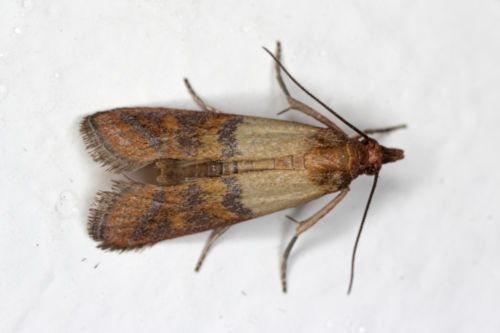
Indian Meal Moth
Indian meal moths have a 5/8 to 3/4 inch wing span and are a copper colour with a grey band across the wings. One of the most common stored pests found within facilities and homes, they feed on flour, whole grains, nuts, chocolate, dog food and birdseed. The larvae produce a silky web upon the products on which they have been feeding. All infested items should be disposed of and uninfested items place in sealed containers. Control involves the use of phermone traps, sanitation of infested areas,removal of infested items, as well as a residual application to cracks and crevices where products were stored.
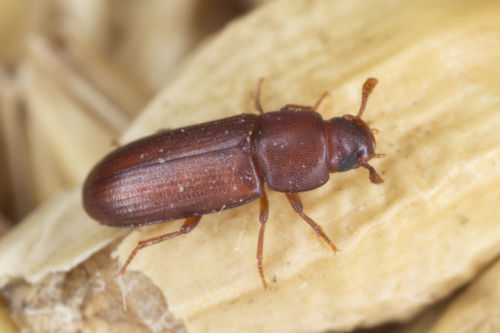
Red Flour Beetle
Flour beetles are reddish brown in colour and about 1/8 of an inch in length. They are major pests of flour but can not feed on whole grains. They are frequently attracted to grain dust, chocolate, spices, and nuts. Heavily infested flour has a disagreeable odour and flavour as a result of the insects scent glands. Infested items should be discarded and cupboards where items were stored should be vacuumed to eliminate spilled flour and other food dusts. Control involves sanitation of infested areas, disposal of affected product, as well as a residual application of cracks and crevices where products were stored.
Fly Information & Control
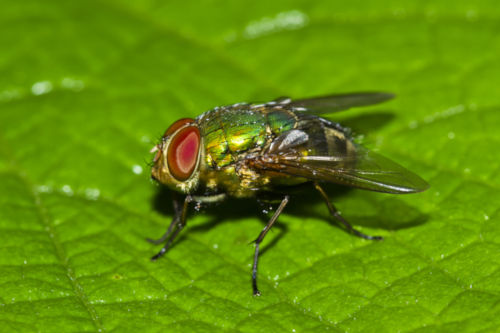
Blow Fly
There are approximately 500 to 700 species of carpet beetles worldwide. They can range in size from 1-12 mm. Key characteristics for adults are round oval shaped bodies covered in scales. The carpet beetle larvae start to feed as soon as they hatch. Carpet beetles are normally associated with things such as carpets, wool, furs, and any processed animal or plant food. Regular cleaning of spilled food or lint will eliminate any sites for potential breeding. Susceptible items like food, wool items, and furs should be stored in an insect proof container. If an infestation is suspected then the source of the problem must be removed and destroyed to further limit any possibility of spreading. Locating the source of infestation is often the major challenge and residual chemical applications are often required.
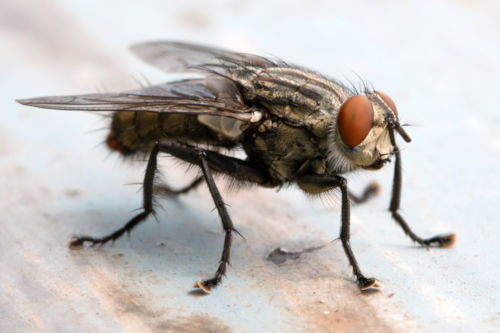
Cluster Fly
Cigarette beetles are light brown in colour and approximately 1/8th of an inch in length. They are major pests of stored tobacco but also feed on spices, books, dried fruits, nuts, and vegetables. Most common items infested in homes are dried dog food and paprika and they can easily penetrate packaged materials. They are strong fliers and can enter through open windows and doors but are often brought in within products in their larval stages. Control involves locating the source of infestation and subsequent removal of the product along with sanitation procedures. Residual application of cracks and crevices and all potential harborage areas should follow.
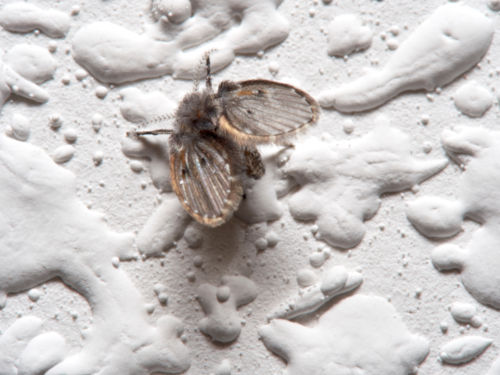
Drain Fly
Indian meal moths have a 5/8 to 3/4 inch wing span and are a copper colour with a grey band across the wings. One of the most common stored pests found within facilities and homes, they feed on flour, whole grains, nuts, chocolate, dog food and birdseed. The larvae produce a silky web upon the products on which they have been feeding. All infested items should be disposed of and uninfested items place in sealed containers. Control involves the use of phermone traps, sanitation of infested areas,removal of infested items, as well as a residual application to cracks and crevices where products were stored.

Fruit Fly
Flour beetles are reddish brown in colour and about 1/8 of an inch in length. They are major pests of flour but can not feed on whole grains. They are frequently attracted to grain dust, chocolate, spices, and nuts. Heavily infested flour has a disagreeable odour and flavour as a result of the insects scent glands. Infested items should be discarded and cupboards where items were stored should be vacuumed to eliminate spilled flour and other food dusts. Control involves sanitation of infested areas, disposal of affected product, as well as a residual application of cracks and crevices where products were stored.
Rodent Information & Control
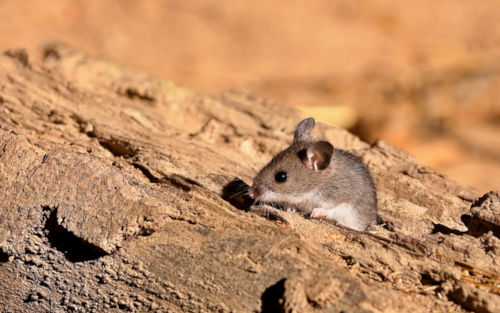
Deer Mouse
Deer mice are small in size approx. (8 to 10cm) and their colours vary from white to black but all have a white underside and feet. Deer mice will reproduce profusely and are the highest in numbers among their species. Deer mice are known carriers of the Hanta Virus that can be deadly to humans as it is transmitted through their urine and feces. Control measures include trapping, baiting, & exclusion.

House Mouse
From light brown to black in colour the adult house mouse measures about (7 to 10cm in length). Active at night they live in a wide variety of hidden places that are near food sources and construct nests from various soft materials. Female can have some 5 to 10 litters per year, so their population can increase very quickly. Control involves eliminating food sources, identification & elimination of entry points along with trapping and baiting programs.
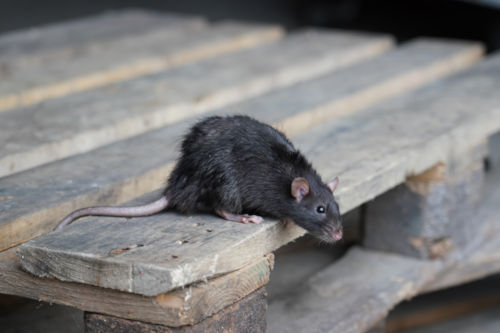
Norway Rat
The norway rat usually brown or dark grey, while the underparts are lighter grey or brown can be up to 25cm in length. Extremely good swimmers they will often inhabit sewer systems and they are excellent diggers and often excavate extensive burrow systems. Control can be challenging as they have a tendency to avoid new objects making trapping more difficult and rats are capable of chewing their way through even concrete barriers.
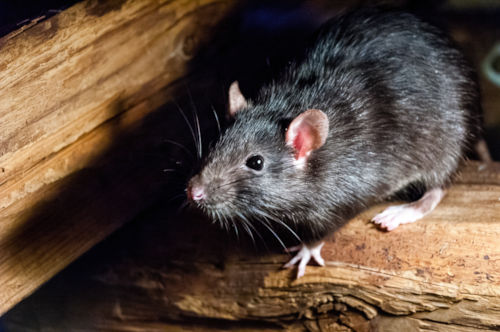
Roof Rat
The roof rat is a poor swimmer compared to the norway rat but a very agile climber and tends to flee upwards. Females will produce 3 to 6 litters per year of up to 10 young per litter. They can be challenging to control as their climbing ability allows them to gain entry into areas that can be challenging to gain access. Trapping, baiting, & exclusion are all methods to be considered.
Wildlife Information & Control

Groundhog
Groundhogs generally measure 40 to 65cm in length and weigh 2 to 4kg. They are excellent diggers using burrows to sleep, rear young, and hibernate. Their burrows can sometimes undermine foundations and landscape interlock. One litter is produced annually in the spring generally containing 2 to 6 young. Control involves humane trapping and relocation along with exclusion.

Raccoon
Raccoons measure between 41 and 71cm in length and weigh between 3.5 and 9kg. They have one litter annually containing 2 to 6 young per litter. Raccoons will seek out easy food sources such as garbage cans. They can cause considerable property damage as they often seek shelter in structures as urban development increases. Control involves humane trapping and relocation along with exclusion.
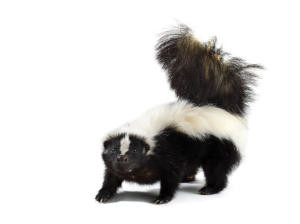
Skunk
Skunks are excellent diggers preferring to den in burrows often finding refuge under decks, porches, and building foundations. They do not hibernate but remain inactive in winter months feeding rarely. Females generally give birth in May to a litter of 4 to 7 young and are very protective of young often spraying when approached. Control involves humane trapping, relocation, and exclusion.
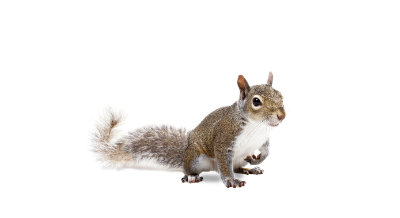
Squirrel
Varying squirrel species are present in the Ottawa region. These clever and persistent animals often attack bird feeders and dig into potted plants and flower beds. Squirrels will often seek shelter in attic spaces, walls voids, and uncapped building vents especially with the onset of winter months. Like most wildlife they will generally have multiple nesting sites. Control involves humane trapping, exclusion, and installation of one-way doors.
Wildlife Information & Control
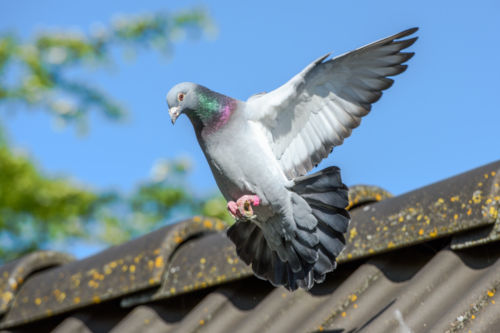
Pigeon
Pigeons have become the most common bird pest associated with building structures. They prefer protected locations such as building ledges, underside of bridges, and mechanical devices on roof locations. Their very acidic droppings can cause significant damage to building surfaces and contain a variety of disease causing bacteria. Control involves trapping, exclusion through netting and bird spikes, as well as a chemical frightening agents.

Sparrow
House sparrow is approximately 6 inches in length and prefer to nest in openings in structures, building ledges, signs, light fixtures and under eaves. They often enter warehouses, department stores, and malls where they will contaminate food product and merchandise. Parasitic mites are often associates with sparrows and their nesting sites. Control involves trapping, exclusion through netting,bird spikes, and installation of vent covers.

Starling
Starlings are 7 to 8 inches in length and purplish-black in colour. In urban settings they tend to roost in building cavities and are often found nesting in kitchen, bath, oven, and dryer vents. Starlings with protected nesting sites often do not migrate in winter months. Control involves trapping, exclusion through netting, bird spikes, and installation of vent covers.
We hope you find our pest listing helpful and informative. Should you require additional information regarding a particular pest or wish to book an appointment please contact us via our online service. A Pestguard service representative will be glad to assist you.